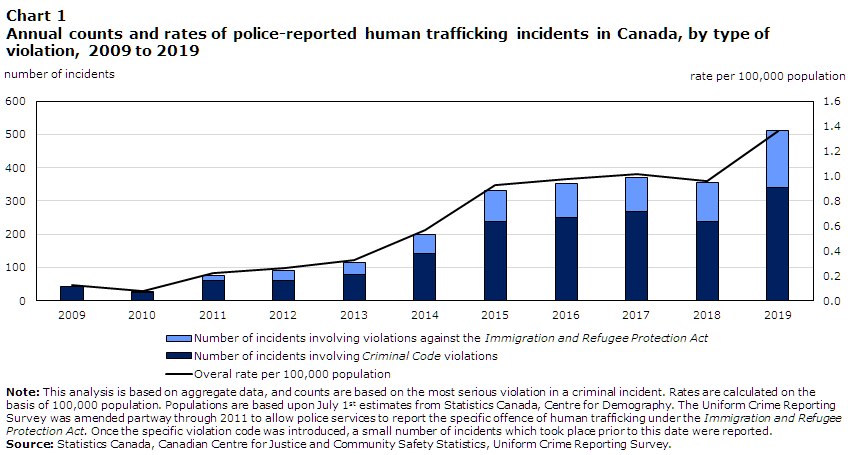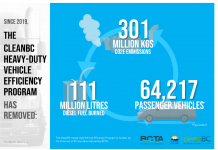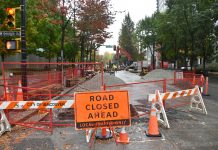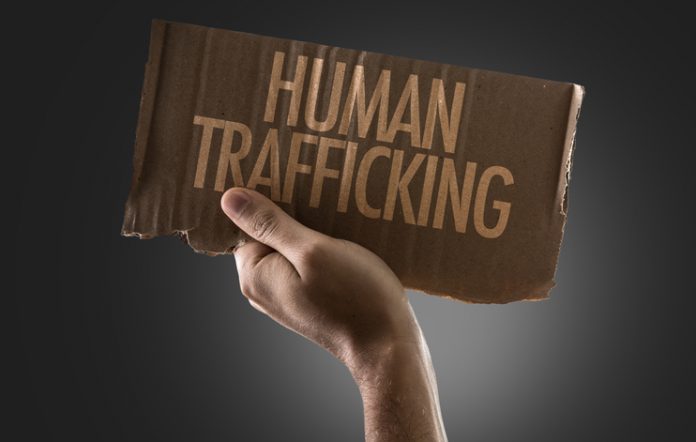Human trafficking – one of the fastest-growing crimes in the World today. Ontario reports cases mostly involving sexual exploitation as sex trafficking. Women, girls, boys and people who identify as 2SLGBTQ are all targets. This old yet seemingly resistant crime has shown little sign of decline.
The business of human trafficking is often characterized as a “low risk/high reward activity” because the crime is clandestine and difficult to detect and investigate. This means that there are relatively low prosecution rates worldwide. Unlike the sale of drugs or guns, human beings can be sold over and over for the financial or material benefit of the traffickers, making this crime extremely lucrative. Modern justice systems still rely heavily on witness testimony to prove that the trafficking has occurred. Due to the trauma experience during the trafficking, many victims will have gaps in their memories or become overwhelmed and/or afraid in court.
The Ontario Trucking Association believes the industry is uniquely positioned to assist in the fight against human trafficking. Combined, there are hundreds of thousands of truck drivers on the road each day and in every community who can help. With every new drivertrained, it means another set of eyes working to eliminate human trafficking. There has even been some recent discussion around making this type of training, part of the entry level training standard (MELT).

Trains, planes and automobiles – these modes of transportation are often unknowingly, used to facilitate human trafficking in Canada. Traffickers have various transportation networks to call on. Domestic / International channels to traffic victims through, without detection.
Here is a description of the system and tips for the transportation sector stakeholders helping them identify human trafficking, then make their business less inviting for possible traffickers
In Canada, the transportation industry is used by traffickers at different stages of the recruitment process for domestic sex trafficking. For example, physical locations such as bus depots, train stations and bus stops are known places where the luring and grooming for sex trafficking can happen. Once a victim has been recruited into sex trafficking, traffickers will then often move them. By private vehicle, rental cars, on-line service, public transportation, busses, subways, trains, transport trailers and planes through their network all to maximize profits, avoiding police and avoiding competition.
Canadian business and transportation stakeholders have recognized the seriousness of this crime and have begun to advocate against human trafficking and implement organizational trainings.
The trucking industry educates truck drivers in both Canada and the United States about human trafficking, what to look for and how to report it. To reinforce their outreach, trucking schools and associations across Canada set out to make free resources available and part of mandatory training for all new drivers. Check your local association online
There is still work to be done in the Taxi and ride share sectors. Educate on the indicators of human trafficking and how to use the Canadian Human Trafficking Hotline*. Having the Hotline number visible in the taxi or on the app is a great way to reach potential survivors.
What can you do?
Unfortunately, both sex and labour trafficking victims share one more thing in common: they often do not have access to safe reliable modes of transportation when leaving a human trafficking situation. So how can the transportation industry help solve this issue?
First, both public and private transportation companies can partner with NGO’s and frontline service organizations to provide vouchers or in-kind fares for survivors leaving abusive situations.
Transportation business companies, associations etc. should also implement person-centered, survivor informed, factual anti-trafficking training and corporate policies. Training should be accompanied by clear reporting protocols, making it easy for employees to report any suspected cases of human trafficking.
Finally, companies should post the Canadian Human Trafficking Hotline number in high traffic, visible locations for staff and passengers so that those who need to see the number can reach out and access supports and services.
Indigenous services and supports
As Indigenous women and girls are particularly targeted, it is critical that culturally appropriate support is available 24/7.
To respond to this need, Indigenous-specific resources are embedded throughout Ontario’s anti-human trafficking strategy. These resources include supports for Indigenous children and youth in care and leaving care, and Indigenous-led supports for survivors and at-risk youth. They also include victim services that take a holistic approach to healing, including support for family members.
Services and supports for Indigenous survivors and youth at risk include:
- public education targeted to Indigenous communities
- multi-sectoral training with Indigenous-specific components
- increased funding for the Anti-Human Trafficking Indigenous-led Initiatives Fund
- Indigenous Anti-Human Trafficking Liaisons program enhancements
- enhanced Indigenous victims’ services
- intelligence-led joint forces team including First Nations police services
The impact on Ontarians
Here’s how the anti-human trafficking strategy is now impacting Ontarians:
- victims and people at risk: quicker identification of people at risk or victims and of available and appropriate supports
- survivors: increased access to specialized and responsive supports to help survivors heal and rebuild their lives
- families: increased ability to identify human trafficking and to find available supports for victims, survivors and families
- traffickers: increased resources for law enforcement and the justice sector to identify, investigate, prosecute and hold offenders accountable
- service providers: increased ability to identify and respond to human trafficking, and to provide resources to support persons at risk, victims and survivors
- public: better awareness of and ability to identify and respond to human trafficking
The ultimate goals of the Provincial Governments HT strategy are:
- reduced incidences of human trafficking in Ontario
- survivors can rebuild their lives
The strategy was implemented in 2020, greater awareness of human trafficking in Ontario may lead to an increase in the number of police-reported cases it said. However, as human trafficking is a vastly under-reported crime, this will not mean the strategy is not working. As a result of actions in the strategy – if more victims feel supported in coming forward, and law enforcement has increased capacity to target and find perpetrators – an increase in reported cases will be an indication of the strategy’s effectiveness.
* If you are experiencing trafficking and you require supports and services, please call the confidential, toll-free, Canadian Human Trafficking Hotline at 1-833-900-1010, day or night. Hotline Response Advocates are available to discuss safety planning, including transportation options.






















